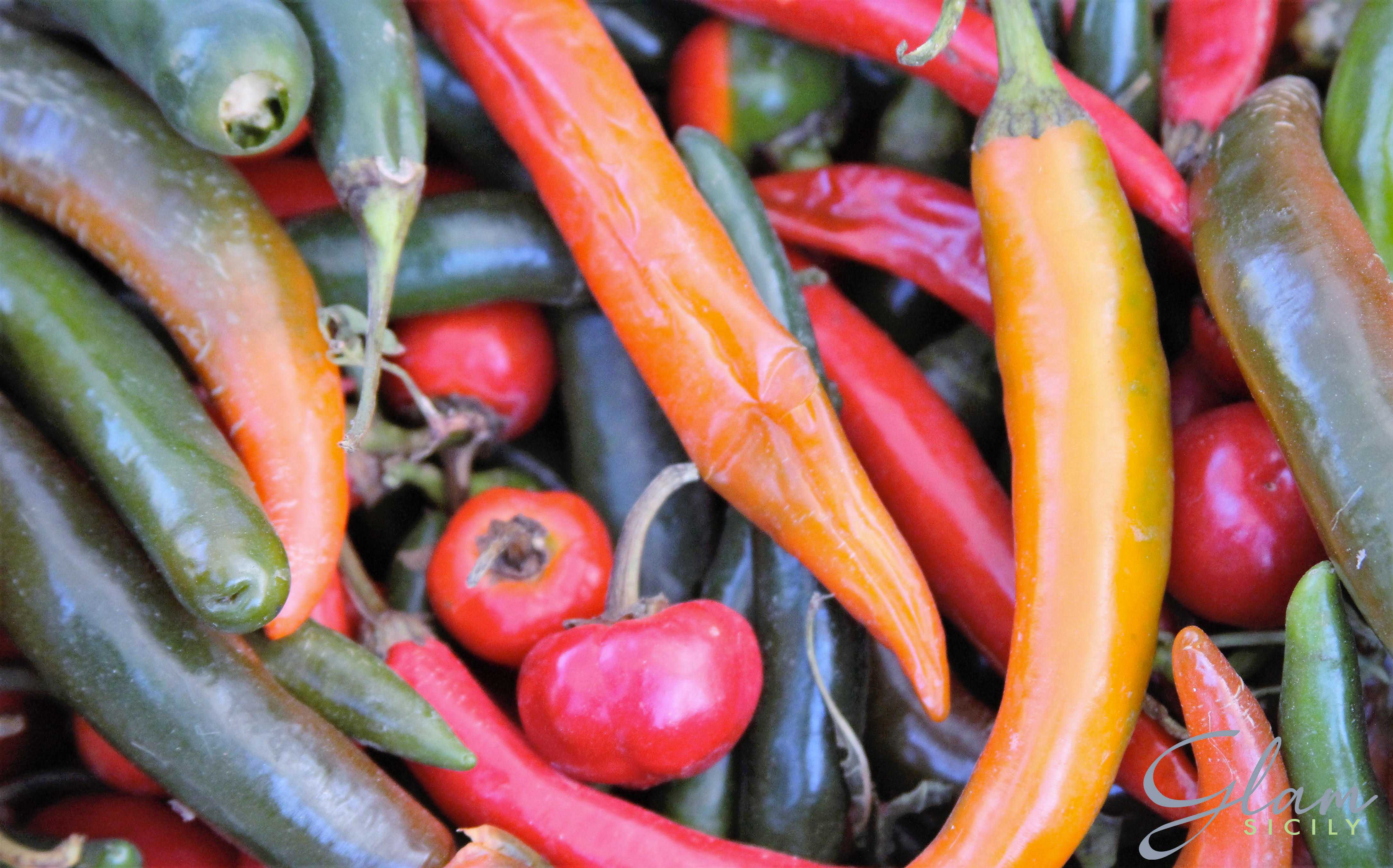“Pereponcino!” shouted my brother as a child, “I want the pereponcino!” I didn’t understand how he could he like it back then! I began to appreciate it only in adulthood, when my husband insisted on letting me taste the ‘nduja. From there my love for this vegetablehad no limits. I put it on everything: soup, pizza, meat, salad. There is no food that it cannot be accompanied with! I remember that my grandmothers used it a lot. They dried it in the sun and then minced it, while the fresh one went instead to canned olives, aubergines and mushrooms in oil. My grandmother Angela always kept it hanging. I think of those hanging bouquets of chilli, garlic, oregano and onions, from which she picked for cooking and I taste those unique flavors.
Below I will explain the chilli jam, which deliciously accompanies a platter of mixed cheeses. In our family we eat a lot of it!
THE TRADITION
Man has known chilli for six thousand years. Chilli has easily spread around the world. For two reasons: The seeds retain their germination power for two or three years, in almost all climatic conditions. And then the seeds take root easily even on a window sill. Many Indian tribes in North and South America used chilli as a currency for their trade. For them it was also a powerful talisman, capable of protecting from evil. So they tied garlands of chillies to their canoes. They were used to ward off the evil spirits of the water. Even today it is used as a good luck charm and contains a hopeful message of good omen in its horn.
THE PROPERTY
Chilli is recognized as a food rich in health properties for our body. In fact, thanks to capsaicin – the alkaloid that makes it spicy – it helps digestion and has an analgesic effect. In addition, it also contains a large amount of vitamin C, so it is useful for strengthening the immune system. Its properties are numerous and it is a spice that has many beneficial substances for the body.
Furthermore, the low calorie, carbohydrate intake, and the presence of good dietary fiber, make chilli pepper a particularly suitable vegetable for those who follow a low fat diet. A condiment that, if not accompanied by foods rich in fat, is able to increase the sense of satiety, has a mildly diuretic and laxative effect, and helps intestinal peristalsis.
In addition, given the analgesic and anti-pain properties recognized by capsaicin, chili pepper is also used as a topical analgesic, like chili oil, for muscle pain.

RECIPE
Ingredients
- 200 grams of chilli
- 200 grams of red apples
- 50 g of Piccadilly tomato
- 300 grams of sugar
Cut the back of the chillies and blend them with the apples and the tomato.
At this point add the sugar and cook for 20 minutes.
The jam is ready, pour it into the jars that will be turned upside down to create the vacuum. The jam should be stored for 3 months in a dry place. Once opened it should be placed in the fridge and consumed in 4 days.
If your chilli is among the first in the Scoville scale (it is therefore too spicy) and you want to “soften” it a little, you need to soak it for an hour in vinegar and salt, in the proportion of 4/1. Also remember that the longer the cooking is, the more pronounced the spicy flavor becomes. More simply, to cushion the spiciness it will be enough to eliminate the placenta, consisting of white filaments that are located at the top, near the petiole and the seeds. In fact, it is in these filaments that capsaicin is concentrated, the alkaloid that gives the peppers their characteristic spicy flavor.






Leave A Comment